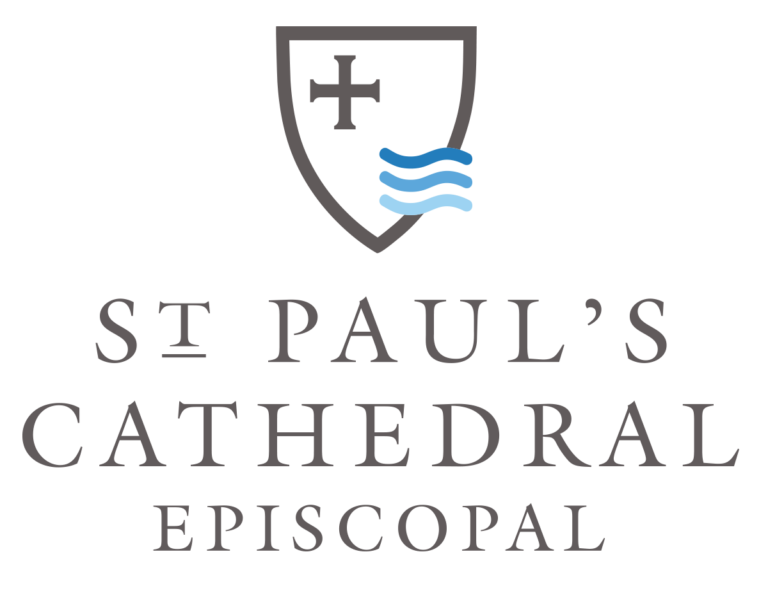Hello St. Paul’s,
It seems that most people enjoy the quizzes we see on social media, so this week I invite you to test your knowledge of our great Anglican treasure, the Book of Common Prayer, by going on a short scavenger hunt with me through our Prayer Book. I have twelve questions for you. The answers are at the end of this letter. All of these questions and answers pertain to the 1979 Prayer Book, and as you probably already know, the pagination of the Prayer Book is the same, regardless of size or design. Good luck!
- The Book of Common Prayer contains an entire book of the Bible. Which one?
- There is one place in the Eucharist service where silence is mandated, rather than being suggested. Where does that occur?
- Buried deep in the prayer book is a text known, rather ominously, as the Disciplinary Rubrics. What are they and where can you find them?
- Where is the use of incense addressed?
- Where in the Prayer Book is the question of “evil ministers” addressed?
- What are the five occasions in the year recommended for baptism?
- What are the special duties of a Deacon in a Eucharist service?
- At a funeral, when is the casket required to be closed?
- When is it permissible to omit the Lord’s Prayer from Morning or Evening Prayer?
- What are the two essential elements of baptism?
- What term is given to the directions printed in italics throughout the book?
- Where can you find the appointed readings for Morning and Evening Prayer, this week and next week?
I hope you’ll take some time to wander on your own through the Book of Common Prayer. You’ll find a lot of the Bible in it!
See you on Sunday.
Your sister in Christ,
Penny
ANSWERS BELOW
- The Episcopal Church is unusual among mainline denominations in including the entire Book of Psalms in our worship book: it begins on page 585.
- At the breaking of the bread, “A period of silence is kept”. This is on page 364 in the Rite II service and on page 337 in Rite I.
- The Disciplinary Rubrics are found on page 409 and they lay out the circumstances under which a priest may deny Communion to a parishioner, specifically in the case of “living a notoriously evil life”, “those who have done wrong to their neighbors and are a scandal to other members of the congregation”, and where “there is hatred between members of the congregation”. Note that the priest must report and justify this action to the bishop within 14 days.
- The only place where incense is addressed is on page 143 in the additional directions for Evening Prayer: “If incense is to be used, it is appropriate after the candles have been lighted and while the hymn Phos Hilaron is being sung.”
- In the Historical Documents at the back of the Prayer Book we have the Articles of the Church of England. They are not binding on the Episcopal Church but provide context and guidance. Article XXVI on page 873 is “Of the Unworthiness of the Ministers, which hinders not the effect of the Sacraments”.
- In the additional directions for baptism on page 312, we learn that Holy Baptism is especially appropriate at the Easter Vigil, on the Day of Pentecost, on All Saints’ Day, on the feast of the Baptism of our Lord, and when the bishop is present.
- On page 322 (Rite I) and 354 (Rite II), concerning the celebration, “A deacon should read the Gospel and may lead the Prayers of the People. Deacons should serve at the Lord’s Table.”
- On page 468 (Rite I) and page 490 (Rite II), concerning the burial service, “The coffin is to be closed before the service, and it remains closed thereafter.”
- On page 142 in the additional directions for Morning and Evening Prayer (collectively known as the Daily Office), “The Lord’s Prayer may be omitted from the Office when the Litany or the Eucharist is to follow immediately.”
- On page 313 in the instruction regarding Conditional Baptism, water and the Name of the Father, and of the Son, and of the Holy Spirit (ie the Holy Trinity) are specified as the essential parts of Baptism.
- The general term for liturgical directions, printed in italics throughout the Prayer Book, is “rubrics”, a word meaning “red”; in early editions of the Book of Common Prayer the rubrics were printed in red type to distinguish them from the liturgy itself.
- The lectionary for the Daily Office is found beginning on page 936. It is a two-year cycle, and the readings for each week are printed on facing pages. Readings for Year 2 are all on the odd pages, and we are in Year 2. So, for this week which began on Sunday August 23, we look at page 981 and the lectionary for Proper 16, “the week of the Sunday closest to August 24”. For next week, we go to page 983.
How did you do? Drop me a line and let me know!

